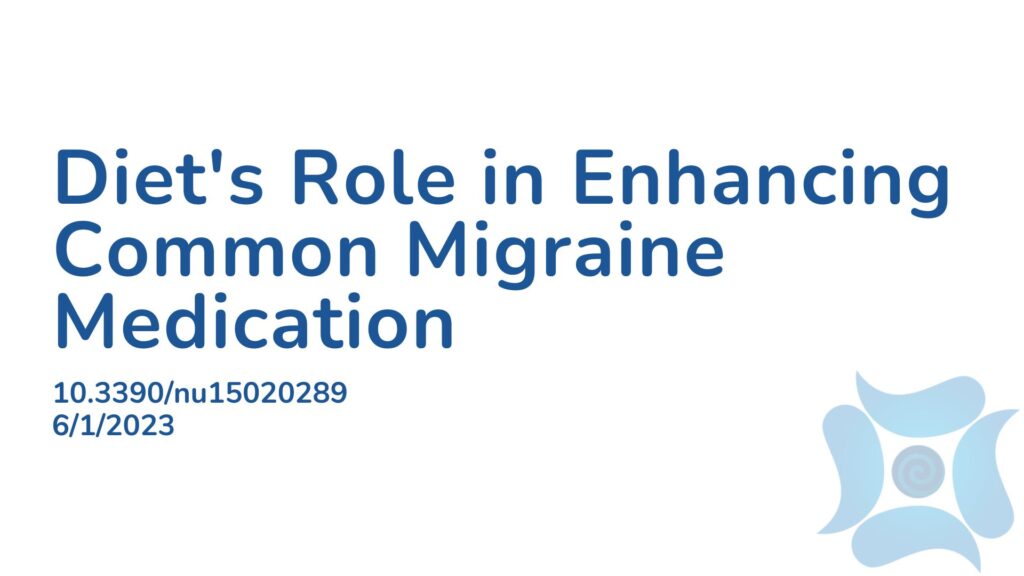Summary:
Migraines are a common and debilitating condition, creating a significant burden on society. Despite their severity, there is still a lack of understanding of how migraines start and develop at a molecular level. Calcitonin gene-related peptide (CGRP) is a neuropeptide involved in pain transmission and is released during migraine attacks. New pharmacological treatments for migraines now target blocking the production of CGRP in hopes of preventing a migraine attack and are being prescribed as the first-line treatment for chronic migraines. However, there are still concerns about the long-term safety of these drugs, resistance in some patients, and their safety and effectiveness in children and older adults. Additionally, environmental factors and lifestyle, particularly diet, can influence the effectiveness of these drugs. Lifestyle factors such as diet should also be considered with migraines. Certain foods can trigger migraines, while body weight and composition, influenced by diet, can also affect how the body handles anti-CGRP drugs, as well as the frequency and severity of migraines. CGRP is involved in appetite control and is present in the digestive system, meaning diet can directly interact with CGRP and its receptors. Conversely, CGRP can influence appetite, affecting food intake. This review provides updated information on how dietary nutrients interact with CGRP, the clinical implications, and how nutrition can improve anti-CGRP therapy for migraines. It also discusses how metabolic disorders like obesity and diabetes, which are linked to migraines, may relate to the CGRP system. Of the nutrients mentioned, cacao seemed to be the most profound. The paper discusses how cocoa extract can suppress CGRP release by a mechanism involving inhibition of calcium channels and suggests that diets rich in cocoa may lead to fewer migraines or more effective uptake of anti-CGRP drugs. Ginger and grape pomace extracts also showed a decrease in CGRP release after consumption.
Abstract:
Targeting calcitonin gene-related peptide (CGRP) and its receptor by antibodies and antagonists was a breakthrough in migraine prevention and treatment. However, not all migraine patients respond to CGRP-based therapy and a fraction of those who respond complain of aliments mainly in the gastrointestinal tract. In addition, CGRP and migraine are associated with obesity and metabolic diseases, including diabetes. Therefore, CGRP may play an important role in the functioning of the gut-brain-microflora axis. CGRP secretion may be modulated by dietary compounds associated with the disruption of calcium signaling and upregulation of mitogen-activated kinase phosphatases 1 and 3. CGRP may display anorexigenic properties through induction of anorexigenic neuropeptides, such as cholecystokinin and/or inhibit orexigenic neuropeptides, such as neuropeptide Y and melanin-concentrating hormone CH, resulting in the suppression of food intake, functionally coupled to the activation of the hypothalamic 3′,5′-cyclic adenosine monophosphate. The anorexigenic action of CGRP observed in animal studies may reflect its general potential to control appetite/satiety or general food intake. Therefore, dietary nutrients may modulate CGRP, and CGRP may modulate their intake. Therefore, anti-CGRP therapy should consider this mutual dependence to increase the efficacy of the therapy and reduce its unwanted side effects. This narrative review presents information on molecular aspects of the interaction between dietary nutrients and CGRP and their reported and prospective use to improve anti-CGRP therapy in migraine.
Article Publication Date: 6/1/2023
DOI: 10.3390/nu15020289



